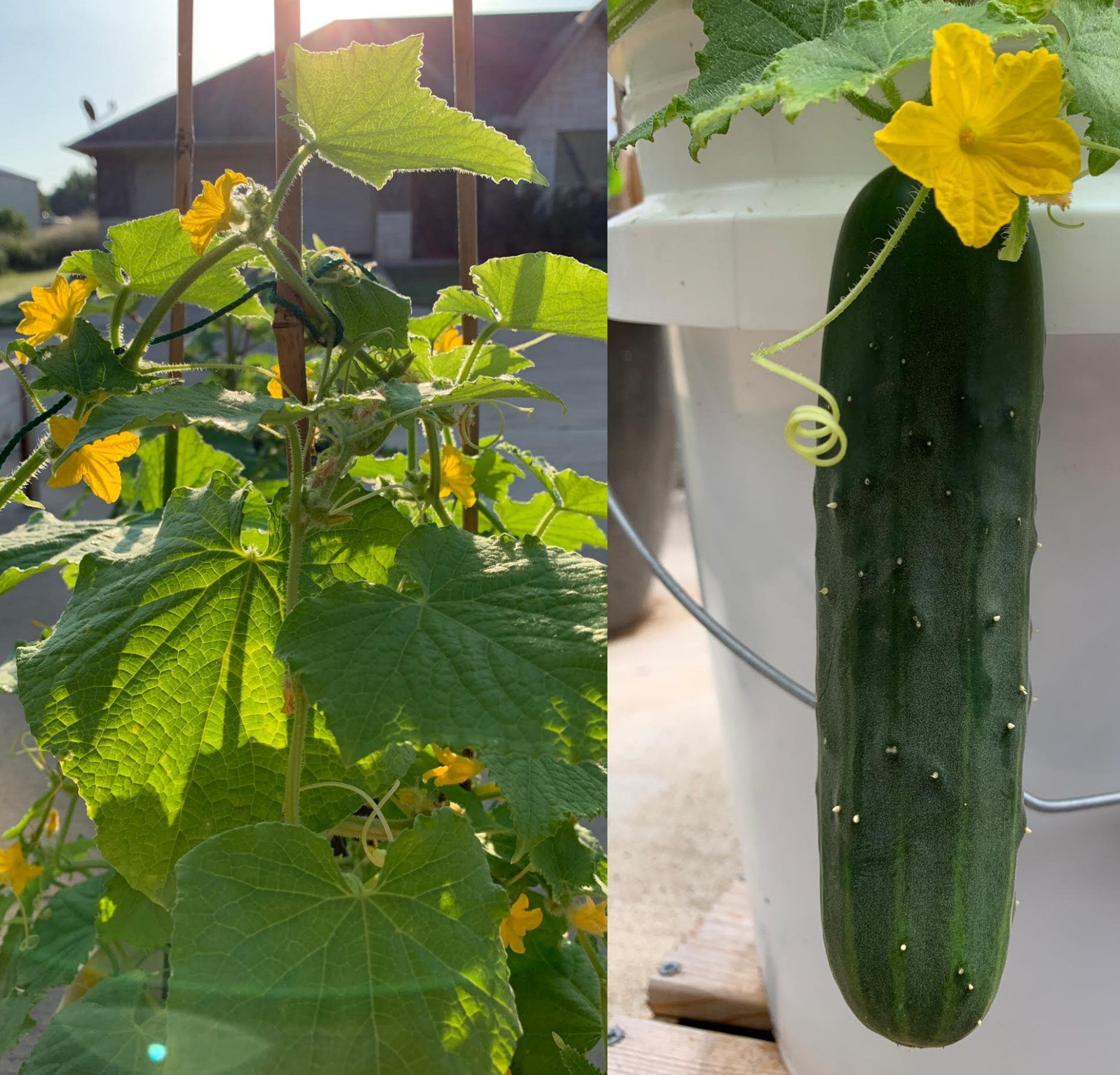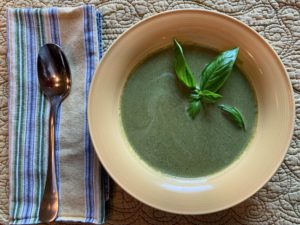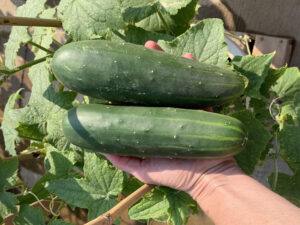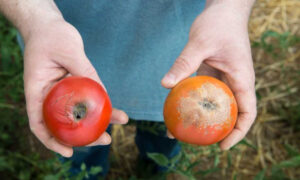Fresh cut cucumbers are synonymous with summer. Whether pickled, or used as an ingredient in soups, salads or refreshing drinks, this garden staple is a must.
Here’s how to grow the best container cucumbers to enjoy all season long!
Container and Soil Type
As with any plant, especially those grown in containers, the main factor in growing a successful crop is to plant in quality soil with a pH between 6.0 an 7.0. An organic potting mix will supply you with the right soil consistency and nutrients to help your plants thrive.
Cucumbers, which are members of the gourd family, are classified as either a vine or a bush type. You can plant either kind in containers, but if you choose a vining type, you’ll need a trellis. Bush type, while more compact, may still need a trellis or teepee to support the vines and fruit.
For bush varieties, choose a container that is at least 10-12″ in diameter and depth. One vining cucumber plant can be grown in a five gallon, food grade bucket, provided it has drainage holes. Another option is to use a planter boxes like the ones I’ve built. The 36″ x 18″ x 11″ planter box size can accommodate two plants and a trellis. Here are the plans if you’re interested in building your own!
Cucumber Varieties
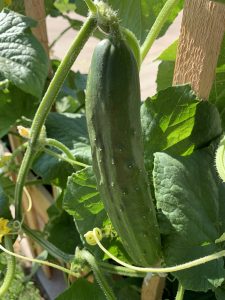
It may be challenging to decide which variety of cucumbers to grow as there are more varieties than there are seeds in a cucumber! I’ve grown both the Marketmore and the Burpless Bush hybrid varieties. The former is a vining cucumber that is resistant to mosaic virus and produces good quantities of traditional slicing cucumbers. The latter is a popular variety for containers, although it too will need vine support. You can find information about other varieties here.
How to Plant Seeds
Start seeds indoors two to four weeks before the last frost date. Plant 2 to 3 seeds per container at a depth of 1/2”. After the seedlings develop their second set of leaves, choose the sturdiest one and cut the remainder off at soil level. If you pull them instead of cutting them, you’ll risk damaging the roots of the favored seedling. Cucumbers can be sensitive to root disturbance, so take care when transplanting them as well.
If you are going to direct sow, wait at least one week, preferably two, after the last spring frost to plant outside when the soil temperature is 70°F. Cucumbers are susceptible to cold winds, so you may need to protect them with makeshift row covers if planting in early spring.
Light Requirements
Cukes, as they are affectionately known, require 6 hours or more of full sun. (Some vine types will tolerate some shade.) They are considered spring and summer crops. But if you live in the South, you may be able to plant a late summer crop to harvest in early fall while the temperatures are still warm.
Water Requirements
Cucumbers have the highest water content of any other vegetable, so be sure to keep them well hydrated. The soil should never be allowed to dry out. Thus, you will need to keep an eye on them since plants in containers will dry out quicker than they would if they were in the ground. If you notice the leaves drooping, it is a sure sign they need watering. But don’t wait for this sign of distress to appear before you water. Check for dampness by inserting your finger a couple of inches into the soil. If it’s dry, it’s time to water. Try not to get the leaves wet when watering the plant, as this can make them more susceptible to diseases.
This article contains affiliate links. If you make a purchase using one of these links I will receive a very small commission at no additional cost to you, and it will help me maintain this website. Rest assured, I only recommend products I actually like!
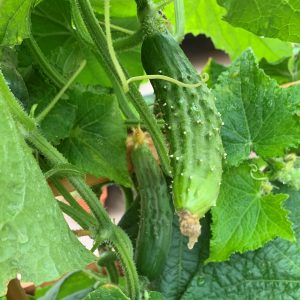
Fertilizer
Plants in containers will lose nutrients from the soil quicker than plants in the ground because the water draining out of them will carry the nutrients away.
Since cucumbers like a fertilizer that is higher in potassium, you may want to add an organic granular one to the first few inches of the soil once the plants have begun to flower. A fertilizer with too much nitrogen will stimulate foliage growth but not fruit production. That being said, I use a balanced organic liquid fertilizer, which makes the nutrients readily available to the plant. I follow the package directions, and the results have been a steady crop of cukes! Alternatively, this is the granular fertilizer I use.
Pollination
Most cucumbers grown in home gardens are monoecious, meaning each plant contains both male and female flowers. Bees and other insects, as well as the wind, can help spread pollen from the male to the female flowers. However, as the bee population has diminished in recent years, you may need to pollinate by hand.
Gynoecious varieties are hybrids, which have predominantly female flowers, and thus more productive, still require male flowers and pollinators. Parthenocarpic varieties do not require pollination to bear fruit.
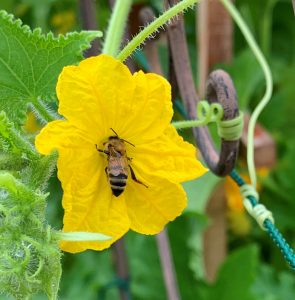
Harvest
Once they are pollinated, cucumbers will grow quickly. Be sure to check your garden each day. When to harvest depends entirely on which variety you are growing. The Marketmore variety should be picked when they are between 6″ and 8” long. If you wait too long to harvest, the over-sized fruit will most likely taste bitter and have more seeds.
Whatever you do, don’t stop harvesting cucumbers even if you want to take a break from eating them. Otherwise, the cucumbers will continue to mature and will signal to the plant to stop producing flowers in order to put its energy into developing seed. Instead, continue to harvest them when they reach the proper size and give them to neighbors or toss them in the compost pile if you have to. Harvesting the fruit will stimulate more cucumber production.
The best way to harvest a cucumber is to cut it from the thick vine leaving about a ¼” stem on the fruit. Do not tear the fruit off the vine, or you could injure the plant.
Cucumbers can be stored on the counter top for a couple of days or in the refrigerator for up to several days.
Seed Collecting
You can save the seed from your cucumbers as long as they aren’t a hybrid. Hybrids are a cross between two different plants, and their seeds are usually sterile. If you know you are going to collect seeds, grow only one variety of cucumber to eliminate the chance of cross-pollinating with a different variety.
Choose a healthy plant that is disease-free so as not to transfer the disease via the seeds. Allow one or more cucumbers to remain on the vine near the end of the growing season so it will mature to seed stage. You’ll know it’s mature because the cucumber will turn yellow and soften. Remove the seeds and place them in a container with a small amount of water for a few days, stirring daily to help loosen the pulp. The seeds that aren’t viable will float to the top. Remove the good seeds and allow them to dry on a cloth or paper towel. When they are dry, you may store them in an envelope in a cool, dark, dry place. If stored properly, the seeds will be viable for approximately three to five years. (Here’s a chart on how long various seeds last.)
Pests
Let’s face it. Garden pests are everywhere! Take a few minutes in the morning and evening to look over your plants for insects. Be sure to check under the leaves, examine the vines, and look at the soil. You’ll be amazed at what you find!
One of the most common pests that plague cucumbers are the striped or spotted cucumber beetles. In addition to killing your plants, they can spread disease throughout your garden. Other pests include aphids and squash bugs, which both suck the sap out of your plants. Pickleworms and cabbage loopers are caterpillars that pose a threat to vines, flowers, and fruit, while flea beetles will leave round holes in the leaves.
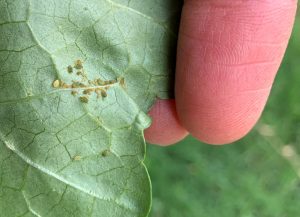
Diseases
One of the primary diseases that can affect cucumber plants is the cucumber mosaic virus, which causes leaves to develop bumps and a mosaic pattern and eventually wrinkle or curl. The virus also stunts the plant’s growth and reduces productivity.
In addition, anthracnose fungal disease turns leaves brown at the margins and will eventually cause the fruit to rot. You can learn more on how to identify and treat anthracnose in this helpful article.
Bacterial wilt is another disease that afflicts cucumbers. It causes the plant to suddenly wilt and die. You can learn more about it and how to protect your garden in this helpful article.
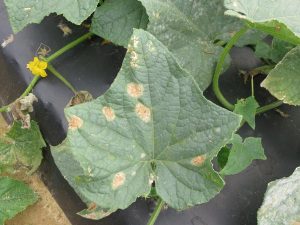
Powdery mildew is a fungus that attacks numerous garden favorites, including cucumbers. It first appears as fuzzy white spots on leaves and stems and will spread rather quickly. The affected plants will turn brown and ultimately die.
Problem Solving
Lack of female flowers – here’s a quick article on why your plants may not have female flowers.
Flowers fall off, immature cucumbers soften and rot – this is most likely caused by incomplete pollination as opposed to blossom end rot.
Bitter tasting – can be caused by a number of stressful conditions such as heat, watering issues, lack of nutrients in the soil, or over ripe fruit.
Deformed cucumbers – can be caused by watering issues, including under or over watering and inconsistent watering. Also, diseases can affect the fruit, causing it to be misshaped. Find out more about what causes this problem and what you can do to prevent it in my article, 6 Reasons Why Cucumbers Are Deformed.
If you love your cucumbers, they’ll love you right back. With a only a little bit of effort you can reap a bountiful harvest of the best tasting container garden cucumbers!
If you found this article to be helpful, please share it with someone you think might be interested in it as well. Thank you!
